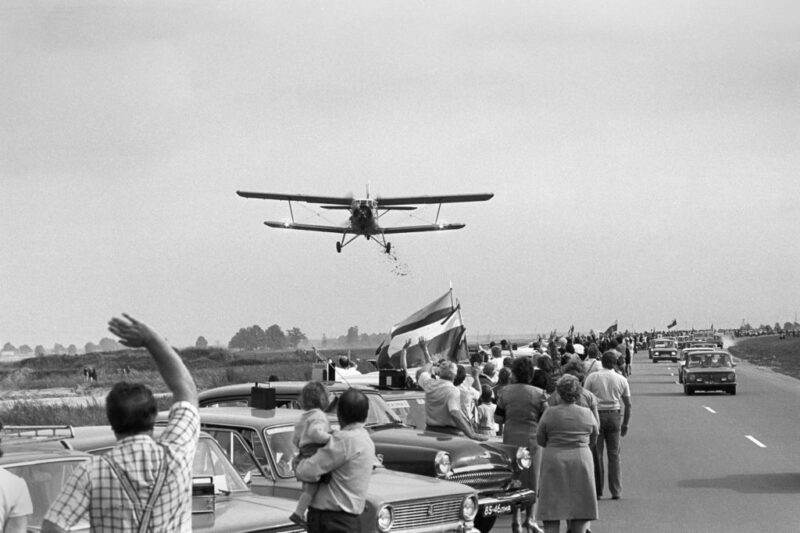100 Years in One Month: A Struggle Gandhi Style

Romualdas Požerskis's photo from the series The Baltic Way
No one knew how to achieve it. No one, to tell the truth, for a long time knew what exactly the goal was. However, looking back, we could say that the path to Lithuania’s independence in 1990 was taken Mahatma Gandhi style. After Mikhail Gorbachev came to power in 1985 and announced perestroika, and glasnost soon after that, i.e. a policy of openness and transparency, and with the opportunity to speak more openly and more freely in public, people throughout the Soviet Union and in the socialist bloc countries began to wriggle around like fish under ice.
In Soviet Lithuania day after day one could see with the naked eye how everything was beginning to pulsate, move, become freer. Whether on the water in kayaks, rafts or cutters, or cycling or hiking, people talked about nature being polluted and the threats to the environment, and the people one met were carrying the tricolour, the flag of independent Lithuania in the interwar years, participated in debates and musical evenings, and felt another kind of spirit, one different from that of Soviet Lithuania. The Rock March travelled across the country for three successive summers with popular young rock groups not only entertaining people, but also teaching them not to be afraid to come together, to act freely, and to say what they were thinking. Initially people congregated in clubs and halls, and, later, crowds gathered in squares and parks to commemorate important dates in history, to discuss important political questions, supported by Sąjūdis, the Lithuanian movement for reform, with its origin in Gorbachev’s perestroika, but from which it gradually separated itself. During those public meetings and demonstrations patriotic songs were sung by everyone, and amongst the speakers on the podiums also stood poets and philosophers, and so in 1987–1989 the events were given the name the Singing Revolution. There was no public, let alone official agreement, but it seemed that what united everyone was a common idea or vision to free oneself from the torpor of Soviet existence through peaceful, non-violent civic action.
The best illustration of this Gandhi-style activity was the public meeting held on 23 August to mark the signing of the Molotov-Ribbentrop Pact. In 1987 around several hundred to a thousand of the boldest came to the first public meeting not authorized by the Soviet authorities. Some of them were holding bags with food products in them so that if arrested by the militia or the KGB they could make the excuse that they were simply walking past from the shops and had stopped to see what was going on. However, a year later these precautions were no longer necessary – around 250,000 people turned up at a meeting in Vingis Park.
Soviet Lithuania had never seen a free gathering on this scale before, but even that was not the limit. A year after that, in 1989, the inhabitants of Lithuania, Estonia and Latvia together organised a demonstration – joining hands, they formed a human chain spanning the three Baltic countries – from Gediminas Tower in Vilnius via the Freedom Monument in Riga to the Pikk Hermann tower in Tallinn. In total between about two to three million people participated in the Baltic Way, one million in Lithuania alone – a little less than one third of the whole population.
It would be difficult to give a precise time when the wriggling fish began to hit the ice, which began to crack and split, until it completely fragmented and the ensuing flood swept the Soviet Union aside. Those that participated in those events might not like the analogy with the fish. During the ecological marches the following slogan could be heard: ‘Fish die silent. You are not a fish!’